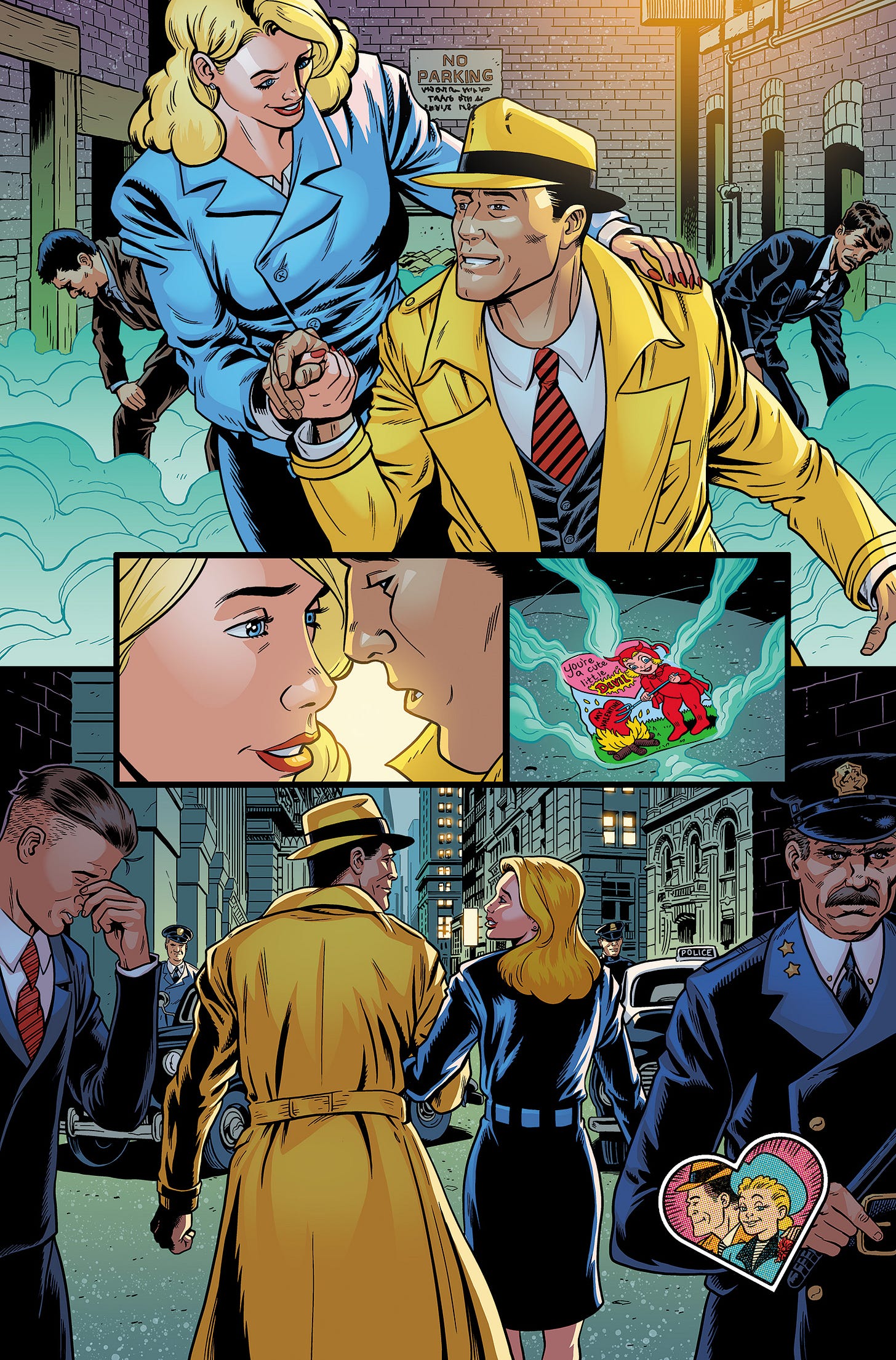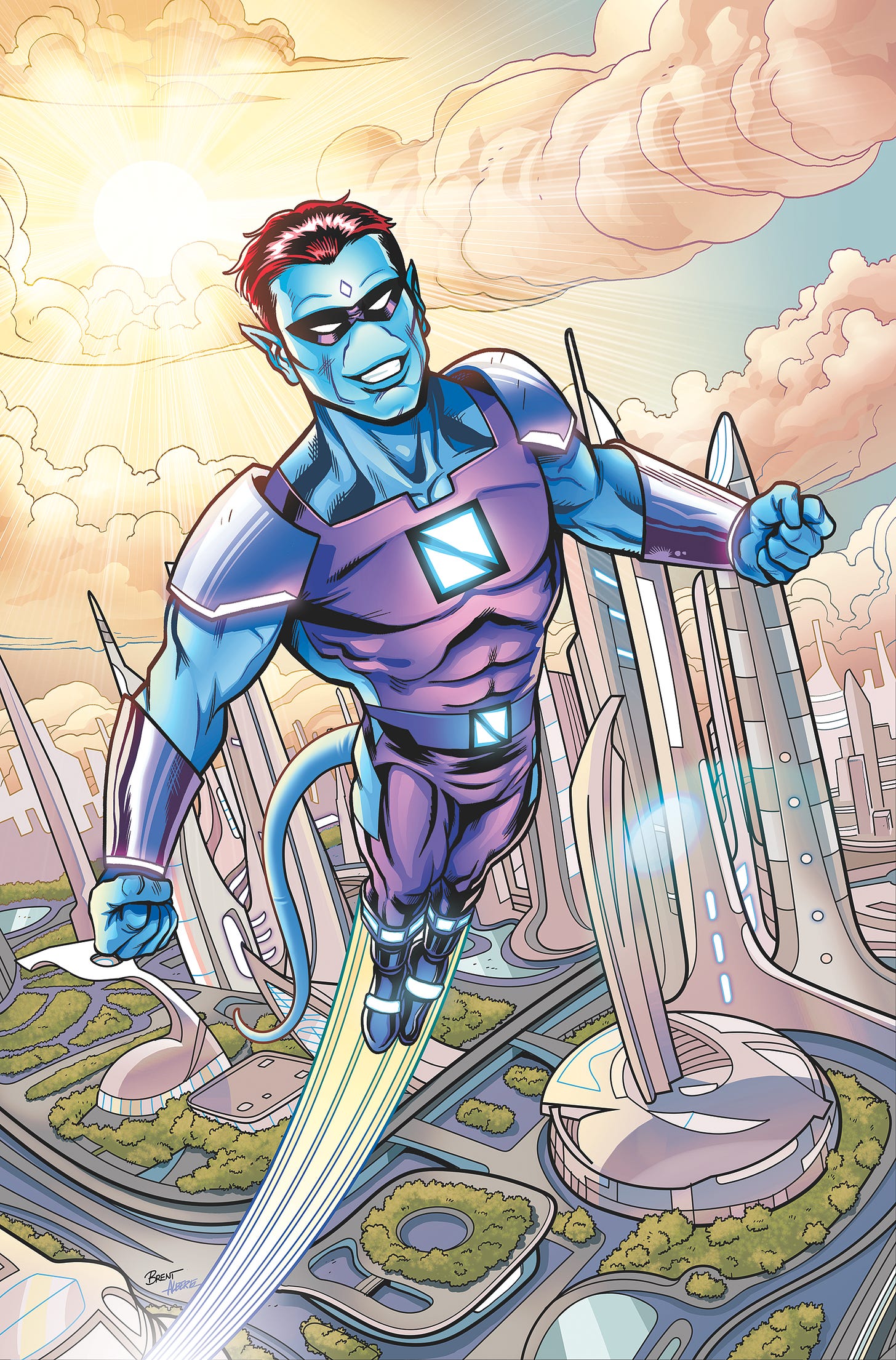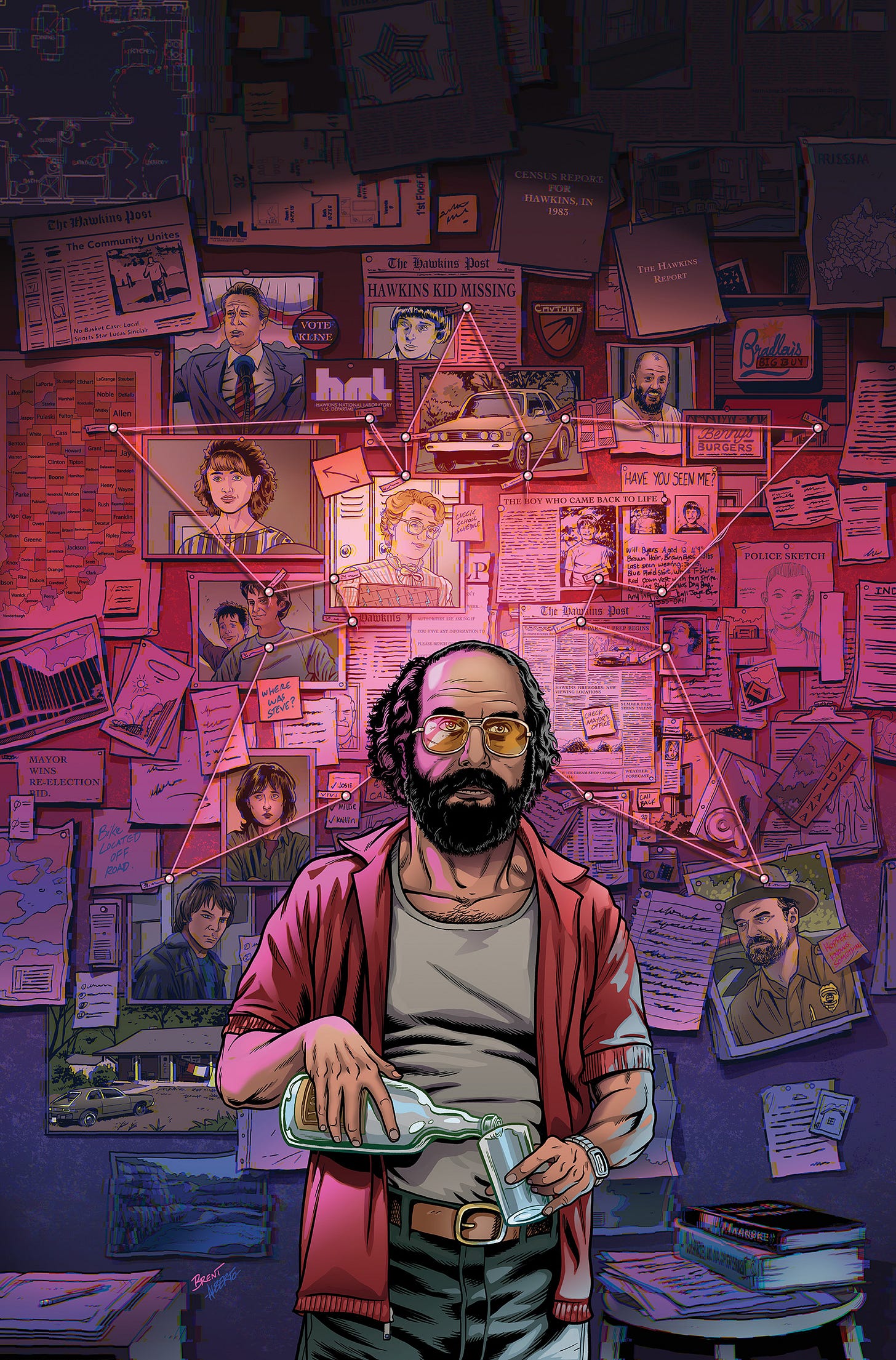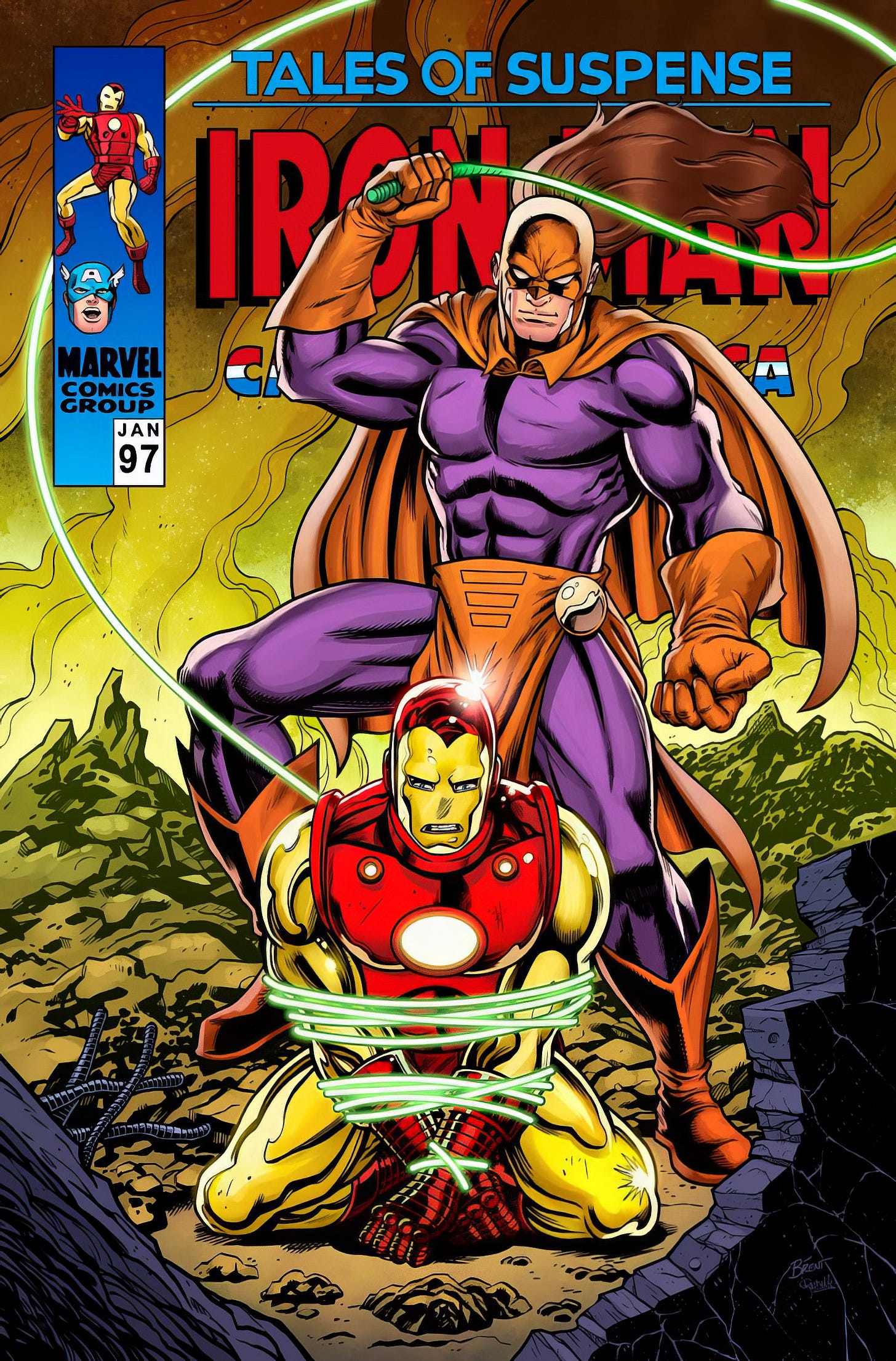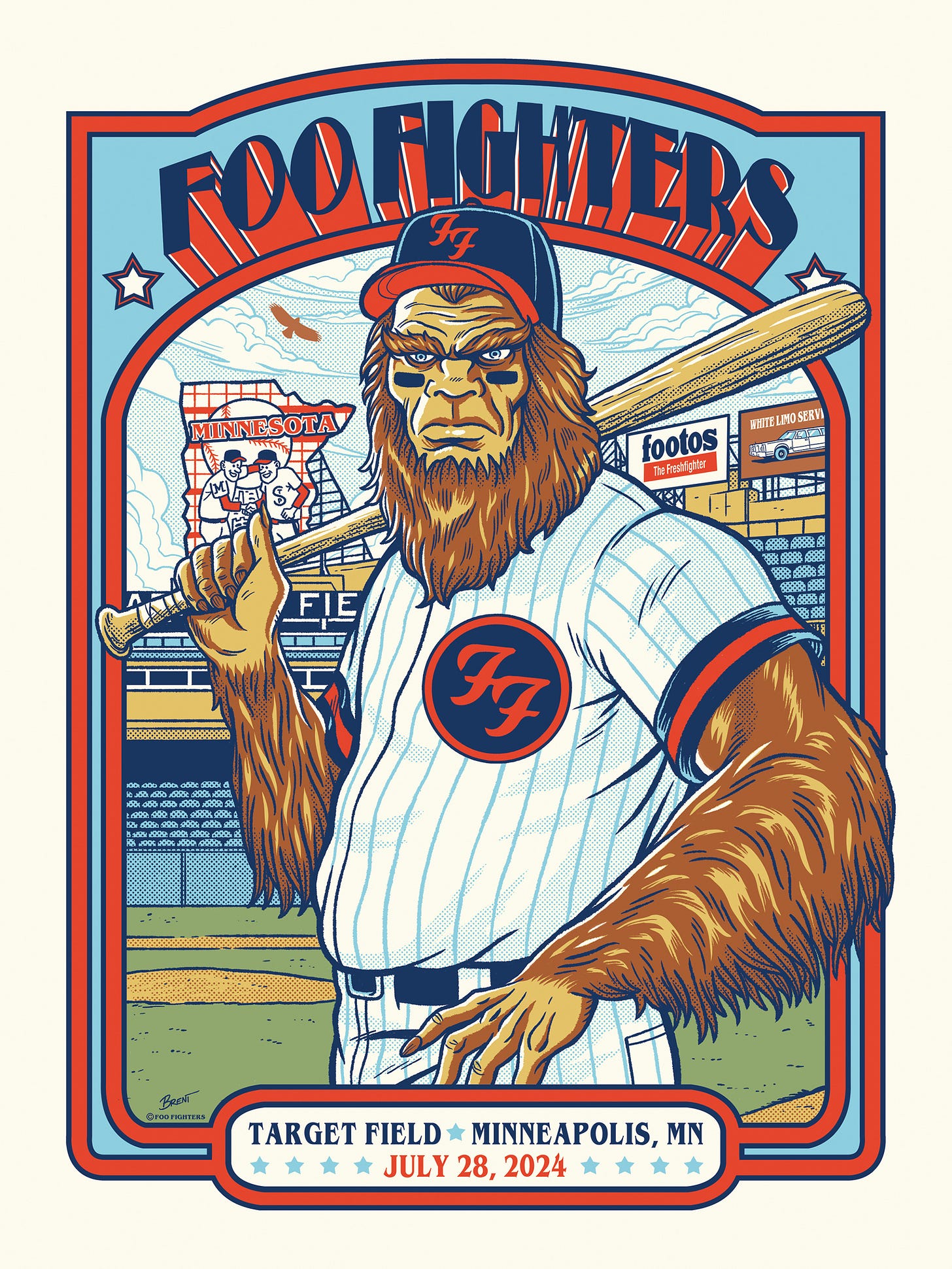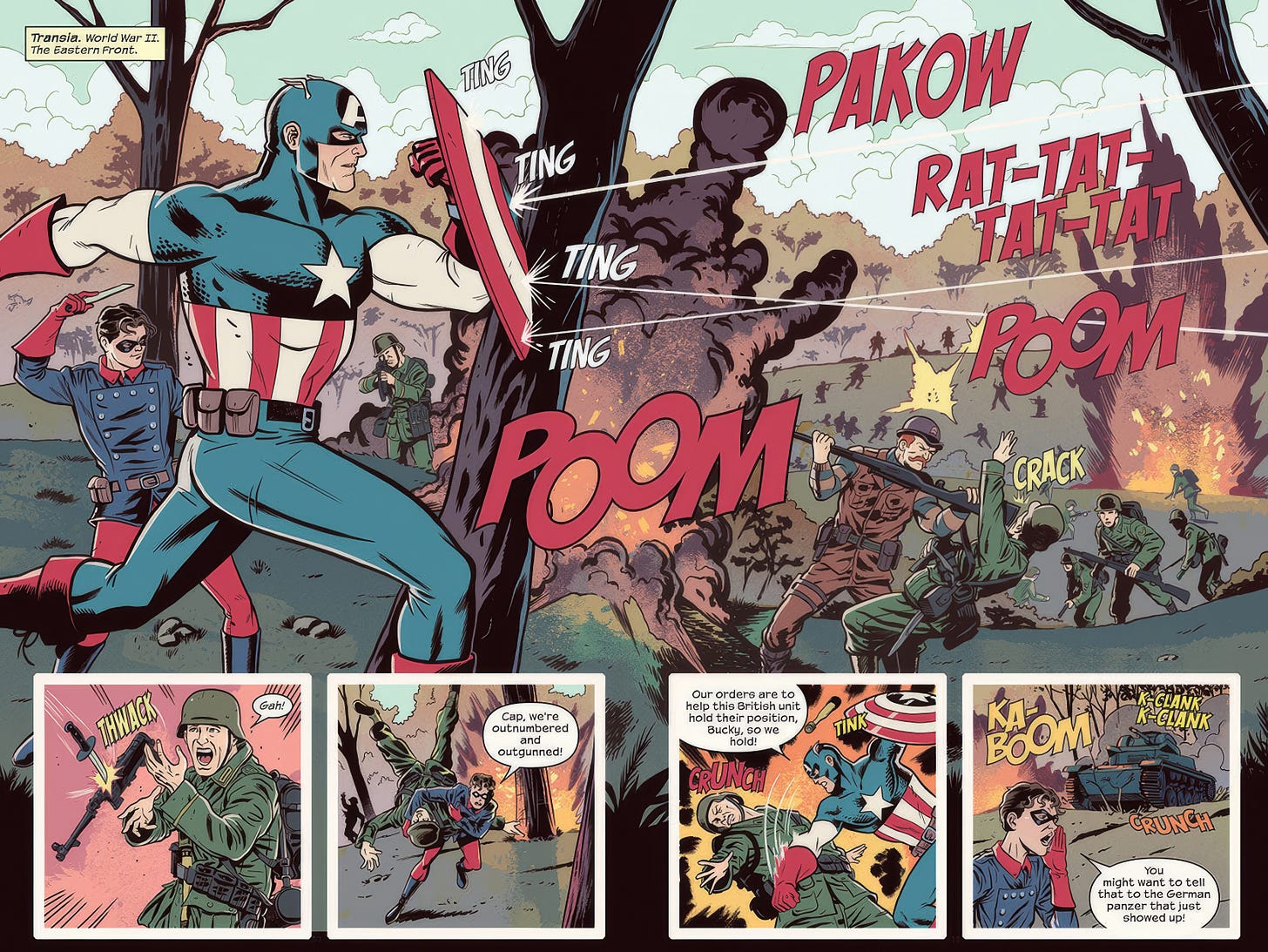Long Story Short ★ BRENT SCHOONOVER
A Monster of a TALENT whose TENACITY is UNPARALLELED
Since meeting him years ago at the first Windy City Comic Show, I’ve been fortunate to have gotten to know Minnesota resident, BRENT SCHOONOVER. His clean dynamic style whether it’s in comics or concert posters, is easily recognizable. His stalwart efforts are unmatched when it comes to hitting deadlines…read on…to find out his literally gut-wrenching story!
BTP: Tell us a little bit about yourself and why you decided to pursue your career as a creative storyteller.
SCHOONOVER: When I was in 4th grade we took a road trip from my hometown of South Beloit, Illinois to Mount Rushmore. A Midwest vacation staple. While driving there we stopped in a small tourist trap place called Wall Drug, South Dakota. Just a giant knick-knack and souvenir place. But they had a spinner rack filled with comics, and I got two issues that day. One was an Incredible Hulk issue, and the other was a West Coast Avengers issue. I was hooked and not long after I got the itch to want to make comics. So me and my brother and friends would just crank them out. Space Mutants, Buzzman, Cyber-Cop. They were terrible, and we loved every minute of making them.
BTP: Family trips and spinner racks. That reminded me of picking up a Marvel-Two-in-One on our trip to Florida. I think it was the Hulk vs. the Thing or something. But yeah, there was magic in those spinner racks. At what age did you seriously start pursuing mainstream comics and what were the circumstances of getting published and paid?
SCHOONOVER: I would say after going to my first Wizard World Chicago I got serious about wanting to do comics. To be honest I thought I had always felt like maybe I needed to get an animation degree or take animation classes cause growing up in my small town, the only job people really could think of that you could make a good living off of drawing cartoons a lot, was working for Disney. So, I always kind of had that in mind until I actually ended up in college. But I always had a feeling I would hate animating. And I did. Only did one class and I knew I didn’t want to do that. But getting published and getting paid, that took a while. After college I sent samples of my work to a small publisher in Texas called Viper comics who was doing a cool indie book called Dead@17 by Josh Howard. It had done well enough that they were doing a short story anthology and I was able to get a story in that. I was super excited at the time to get something printed. I can’t even remember what they paid.
BTP: Who was your first advocate or earliest mentor that helped in your pursuits?
SCHOONOVER: Well, my parents were, which once I got to art school, I realized that was not the case with every artist. So, I was lucky both my parent’s encouraged me to go into the arts. And for being in such a small little town of 4,000 people, the art teachers we had in school were nice. My elementary art teacher, Mrs. Miller, and my high school art teacher, Mr. Eckberg were great.
BTP: Parents and teachers can be a powerful force. Either negatively or positively. My high school teacher always came across like he was doing me a favor. I think he’d burned out by the time I was there. In your mind’s eye, what did you want your career to look like at that point in your life? Was there a comic that you were dying to work on?
SCHOONOVER: My favorite character was and still is The Hulk. I just love drawing him. He’s basically a Universal Monster character set in the Marvel Universe. I’d still love to do a run on that book. I’ve snuck him into stories and done covers. But nothing proper yet.
BTP: When you originally set out to study and learn, when did your learning take place and what resources did you have available to you?
SCHOONOVER: My small town had classes, but they were super basic. And there was no art history. I was only really pursuing knowledge on my own mostly. I would take some weekend art classes at a local community college for life drawing and cartooning. I also did the Art Instruction School program for bit, the one where you could draw the pirate or the turtle. But other than that I got the “How to Draw Comics the Marvel Way book, some animation books, the Burne Hogarth books. Whatever I could really get ahold of. Eventually I found the Minneapolis College of Art & Design at a booth at Wizard World Chicago. I ended up attending and it was a great education in illustration and comic book art. I also did filmmaking and photography. My art history knowledge expanded greatly. My favorite part was getting to learn comics under professionals like Barb Schulz and Peter Gross. They would have other pros like Steve Lieber, Gene Ha, Zander Cannon and Terry Beatty come in as well. It was hard work but a great time.
BTP: Wow, that’s actually pretty impressive. Were you drawing sequential pages by then? What artists and writers were influencing you the most at this point in your studies?
SCHOONOVER: I was doing samples as an early teen, and they were obviously terrible. I remember showing them to Kurt Busiek at a con and he was stern but also encouraging. It took until college to really understand storytelling and layout. We drew a lot of pages in those classes. Peter was awesome about giving out assignments and also sharing pages he was working on for Vertigo. Brian Kelly was in the school and already helping him out as his assistant.
BTP: When compared to your early work experience do you feel like you were well-educated to step into a role or was there a larger divide between school and actual pipeline production?
SCHOONOVER: I think I was. I have always double dipped in comics and the world of commercial art. I got lucky with getting a string of projects early that helped build my confidence. I did editorial illustrations for a local free magazine and then I also did work on a line of educational comics/OGNs for a small book publisher around Minneapolis. This was right out of school, and it helped me get reps in how to work on a schedule and complete quality work in a timely fashion. Of course, there were some pretty rough pages or illustrations that come naturally when you start out but overall, I think my education at MCAD properly prepared me. Plus, I was broke, which nothing gets you to hit a deadline more than an empty bank account.
BTP: Oh yeah, absolutely! Paying bills is such a huge motivator. So, were you able to roll those educational comics into getting other comic gigs in the mainstream? Where did ASTRONAUT DAD fit into that timeline?
SCHOONOVER: The only work I really got from them was more educational comics from a bigger and better paying publisher. I know that those were for a specific audience and those samples really were only going to get me more of the same work. So, while I was doing those, I was continuing to do my own pages for a creator-owned project with a writer friend from college.
BTP: What do you feel was missing in your education vs. the reality of the job? How would you fix this?
I think talking openly about rates, and contracts. I really feel like the generation before me (especially in comics) did not like to discuss these things very much with other people let alone the younger generation. I am not sure why that is. But I do wish that I had gotten a better idea for composing estimates in school. I remember doing a freelance job about a year out of school that about a year after, I learned I really underestimated. I still think about that all these years later. I’d fix this by trying to have more open communication with other artists. Which for the most part I do. I just had a call recently with a fellow artist who is doing a job for a client that I had a year ago, and I walked them through my process for composing my estimate and it was nice to help them out as what they originally thought for a budget was way less than what I told them.
BTP: I remember a period like that when I was coming up in the early 90s. Most artists never shared their process let alone anything else. And now, the flipside is oversharing to some degree. It’s now so easy to learn EVERYTHING that it makes me wonder if people really appreciate all that’s available. What’s been a creative situation in comics that you’ve had to deal with on your own, where there were no answers or no one to turn to, and how did you get through it?
SCHOONOVER: Double-page spread templates! I remember getting hit with one of those in a script ad my brain just hurt from figuring out the gutters and where things could go but shouldn’t. This was before texting, DMs and other quick communication was really commonplace. I was afraid to ask the editor for a template as I didn’t want to ’bother” them even though they totally wouldn’t have had a problem in helping me out. So, I just had to create a template for that and hope I got it right. Which I did!
BTP: As creatives we tend to have personal goals or aspirations for ourselves. What are yours and what does achieving that look like in the next 5 to 10 years?
As I hit my mid 40’s I realize that my interest in continuing to make comics really is going to have to come from writing and drawing my own. I’ve done some short stories before, but I really need to get on doing my own OGN or series. I have some ideas, and my plan is to spend the rest of the year developing a pitch.
BTP: What are your biggest fears in your career currently and what are you doing to keep those in check?
SCHOONOVER: I would say not having enough time in the day to get everything I’d like to get done. Common complaint I know. I have two great young daughters who are active in sports, and I don’t want to miss them doing what they love. But it requires a lot of time away from the desk. So trying to figure out how to maximize the time I am there. Also fear of feeling kind of left behind a bit. I’m 45. There are so many awesomely talented younger artists out there that seem to have a good idea of marketing themselves and getting attention. I feel like I’m a little lost right now in how to find ways of getting people interested in what I am doing.
BTP: I think what I admire about you is your ability to keep a foot in advertising and commercial comic work. Diversifying has been huge for me in a lot of ways to stay employed. But I hear you, locking into an audience who will grow with you seems to be harder than people our age would like. If you’re on the prowl for work, what’s been the best way for you to connect with editors, especially ones you haven’t worked with to show them your art? Have you been able to create long standing relationships with editors?
SCHOONOVER: I would say I did have long standing relationships with a lot of editors for a long time but post covid it’s been a little harder as I’ve gotten older, they’re getting younger, and I just can’t do the comic convention hustle like I used to and get face time. So now I just try and send emails with new work. I really only send them to editors who are working on books I actually read as I think trying to be honest and personal is still a big deal. And I think editors can tell when they are getting the slightly modified spam email with sample pages.
BTP: Describe the perfect day for yourself. Comparatively, what would be the perfect workday?
Non work day. Get up early, go play a round of disc golf, get home, mow the lawn. Go for a bike ride to a local brewery with the family. Come home, jump in our pool for a bit. End the night with a fire.
Work Day- Get up at 5am, hit the gym for an hour. Come home and be at the desk around 7. Maybe doodle in a sketch book and work on a personal project for an hour. Then put on some music or a podcast and get to a comic book gig. Wrap up around 5pm. Then go watch my kids play in one of their sport events.
BTP: I always like the answers to this question. It usually sounds refreshing. As the kids say, NO NOTES. As a follow-up do you ever have time or the inclination to take family trips (that aren’t comic show related)?
SCHOONOVER: Oh yes. We are actually going to Colorado for the first time in September. No comic conventions in the works. Just lots of hikes!
BTP: I went to Denver last year for the first time. The air is very dry, and the altitude was tough on the older folks. But kids seem unaffected by it. Go figure. What advice would you give to your younger self regarding your life’s path thus far?
SCHOONOVER: Enjoy the moment. Don’t stress about the now. Those times in your small apartment working on small paying gigs and going to shows and networking and meeting fellow artists are actually going to be some of your favorite times in your career. Also charge triple for that one commercial gig! Your estimate is too small!
BTP: Haha...yes. I think we’ve all been there. Nothing educates you quicker than experience. How much of a shock was it to you when you realized the difference in page rates for comics and commercial illustration rates? Also...those band posters I always see you doing, they’re amazing, but do they pay well?
SCHOONOVER: Thanks for the kind words. I had an idea that more commercial art from agencies would tend to be better money, but it was still a surprise to me. When I got my first Marvel ongoing, I was still doing side gigs from ad agencies because it was hard to turn down. We had just gotten a house and my wife was pregnant, so I’d crank out a quick gig and it was crazy how easy that money was compared to killing yourself on a monthly comic schedule. And the concert poster gigs are fun. They can be really lucrative if you get a big act like Metallica. AC/DC, or the Foo Fighters.
BTP: What is the most difficult thing you’ve had to do in your career and how did you make it through?
Hardest thing I had to do was finish an issue of Captain Marvel after getting my appendix taken out. I didn’t rest long enough and eventually had to go back to the hospital for an infection. But the issue got done and on time.
BTP: THAT IS ABSOLUTELY CRAZY, BRENT! Did you talk to your editor about this at any point? I can’t imagine your wife was terribly happy about it. Also #comics, amiright?
SCHOONOVER: I did talk to them, they knew what was going on, but I assured them I could hit it. So, it was all me putting pressure on myself. And yeah, my wife warned me that this is where I was headed and she was totally right.
BTP: Thank you for taking the time to share your story, Brent. Please let everyone know where they can find out more about you and your work.
SCHOONOVER: You can sign up for my newsletter at the bottom of my website at brentschoonover.com
Otherwise, there is Instagram @BSchoonyArt







